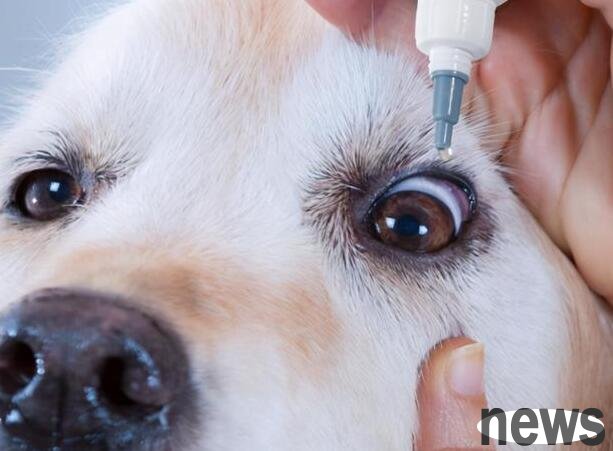How to deal with dog tears! What are tears? The reason why pets have tears. It is caused by porphyrin. Porphyrins appear after the rupture of natural iron-containing red blood cells. The dog's porphyrin is excreted from tears, saliva, and urine....
How to deal with dog tears!
What are tears?
The reason why pets have tears. It is caused by porphyrin. Porphyrins appear after the rupture of natural iron-containing red blood cells. The dog's porphyrin is excreted from tears, saliva, and urine. Tears and saliva containing porphyrins will appear after staying on light-colored fur colors for a period of time, especially when exposed to sunlight, which will darken.
If the color of the tear mark is brown rather than rust-like embroidered red, it is usually because the hair near the tear marks has fungal and bacterial infections that will smell, causing an uncomfortable body odor to the pet.
The amount of porphyrin in tears is related to the animal's breed, health, diet, and living environment. For example, Poodles and Shih Tzu are both species that are prone to tears. Because of their lighter coat color, tears will become more obvious once this type of dog breed appears.

Causes of tear marks
1. Ophthalmic diseases
① Inverted eyelashes (long eyelashes to the eyes)
② Ectopic eyelashes (eyelashes grow on the inner eyelid)
③ Epilobital eyelids or excessive lacrimal glands
④ Glaucoma or other ophthalmic diseases
The above situations will continue to stimulate the cornea or conjunctiva, causing abnormal tears to pets
2. Pain system disease
The nasolactic duct obstruction caused by short-nosed dog syndrome (such as dogs with large eyes but short noses, such as dogs with large eyes but short noses are prone to nasolactic duct obstruction).
3. Ear canal diseases
Pet dogs often suffer from ear canal diseases because the dogs have wrinkled and hairy ear structures, and daily care is difficult. If cleaning is often ignored or care is not thorough, the dirt on their ears will breed a large number of bacteria, fungi, infection with ear mites and other parasites, causing pet itching, dermatitis or otitis externa.
4. Lack of dietary nutrition
A wide variety of pet foods contain artificial pigments, additives, preservatives and other substances, which may cause sensitive symptoms, thereby indirectly increasing the secretion of tears in dogs. Dogs eat too much salty foods can also increase the secretion of tears.
Therefore, if a dog has a tear mark, the owner needs to take it to the pet hospital for diagnosis first, and then find a specific solution to the tear mark after eliminating some serious diseases.

How to treat tears?
1. First, keep the dog's face clean: use a soft, warm wet towel every day to gently wipe the dog's tears.
2. Carefully check the dog's eyes every day and regularly reduce hair that may irritate its eyes.
3. Pay attention to the nutritional balance of dog diet and do not feed human food.
4. The owner needs to keep the dog healthy and physically and mentally. The environmental pressure should not be too great, so as to promote the dog's metabolism and better eliminate waste in the body.
5. Do not feed tap water to dogs, because tap water contains too much iron and other minerals may be harmful to dogs!
6. Replace the dog's plastic water basin and food basin with stainless steel, ceramic or glass. Long-term use of plastic food pots will breed bacteria in the tiny slits of plastic and stimulate the pet's face!
Selection of drugs:
1. Cotton wipes for pets that remove tears can keep the pet's eyes clean and dry, and can improve the effect of tears on the appearance of fur to a certain extent. But it is not the root cause.
2. Pet external tear mark removal agent contains antibiotics, which can inhibit the growth of bacteria and fungi, help reduce inflammatory reactions, fight viruses, and promote corneal repair.
3. Pets take oral tear mark removal agents. Nowadays, the monolithization of pet diet causes pets to lack many trace elements and minerals. Oral tear mark removal agents can improve tear marks caused by nutritional deficiency due to dietary reasons.
4. Pet drugs or health products containing antibiotics can resist viruses, bacteria, Chlamydia or Mycoplasma infections.